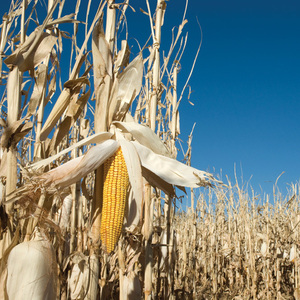USDA maintains forecast for corn use in ethanol production

January 12, 2023
BY Erin Krueger
The USDA maintained its forecast for 2022-’23 corn use in ethanol in its latest World Agricultural Supply and Demand Estimates report, released Jan. 12. The agency also maintained its forecast for season-average corn prices.
According to the USDA, this month’s 2022-’23 U.S. corn outlook is for reduced production; food, seed and industrial use; feed and residual use; exports; and ending stocks. Corn production is estimated at 13.73 billion bushels, down 200 million as an increase in yield is more than offset by a 1.6 million acre cut to harvested area. Total corn use is reduced 185 million bushels to 13.915 billion. Exports are reduced 150 million bushels to 1.925 billion, reflecting the slow pace of shipments through December, and the lowest level of outstanding sales as of early January since the 2019-’20 marketing year.
Advertisement
Advertisement
Food, seed and industrial use is lowered 10 million bushels, with reductions in corn used for starch, glucose and dextrose. Feed and residual use is down 25 million bushels to 5.275 billion, based on indicated disappearance during the September-November quarter as reflected by the agency’s Grain Stocks report. With supply falling more than use, 2022-’23 corn stocks are lowered 15 million bushels. The season-average corn price received by producers is unchanged at $6.70 per bushel.
The USDA has maintained its forecast for 2022-’23 corn use in ethanol at 5.275 billion bushels. An estimated 5.326 billion bushels of corn went to ethanol production in 2021-’22, up from 5.028 billion bushels in 2020-’21.
Foreign corn production is forecast down with declines for Argentina and Brazil partly offset by an increase for China. Production is reduced for Argentina reflecting declines to both area and yield, as heat and dryness during December and into early January reduced yield prospects for early-planted corn in key central growing areas. Brazil corn production for 2022-’23 is cut reflecting dry conditions for first-crop corn in parts of southern Brazil. China corn production is higher based on the latest area and yield data from the National Bureau of Statistics.
Advertisement
Advertisement
For 2022-’23 global trade, the USDA expects increased corn exports for Ukraine and reductions for Argentina and the U.S. For 2021-’22, Argentina’s exports for the marketing year beginning March 2022 are lowered based on observed shipments to date, while Brazil is raised. Corn imports for 2022-’23 are lowered for Vietnam and Peru. China’s corn feed and residual use is raised based on a larger crop and lower sorghum imports. Foreign corn ending stocks are down, mostly reflecting reductions for Ukraine, Brazil, Pakistan, and Paraguay with a partly offsetting increase for China. Global corn stocks, at 296.4 million tons, are down 2 million.
Related Stories
The U.S. EPA on July 8 hosted virtual public hearing to gather input on the agency’s recently released proposed rule to set 2026 and 2027 RFS RVOs. Members of the biofuel industry were among those to offer testimony during the event.
The USDA’s Risk Management Agency is implementing multiple changes to the Camelina pilot insurance program for the 2026 and succeeding crop years. The changes will expand coverage options and provide greater flexibility for producers.
The USDA’s National Agricultural Statistics Service on June 30 released its annual Acreage report, estimating that 83.4 million acres of soybeans have been planted in the U.S. this year, down 4% when compared to 2024.
SAF Magazine and the Commercial Aviation Alternative Fuels Initiative announced the preliminary agenda for the North American SAF Conference and Expo, being held Sept. 22-24 at the Minneapolis Convention Center in Minneapolis, Minnesota.
Scientists at ORNL have developed a first-ever method of detecting ribonucleic acid, or RNA, inside plant cells using a technique that results in a visible fluorescent signal. The technology could help develop hardier bioenergy and food crops.
Upcoming Events










